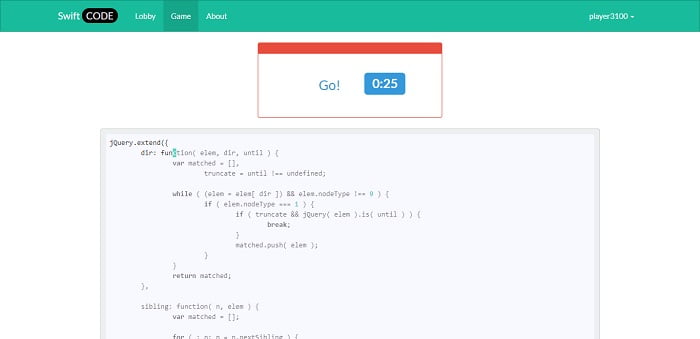
- Convert javascript to swift online how to#
- Convert javascript to swift online install#
- Convert javascript to swift online code#
Once a matching case has been found, the switch statement exits after the case block executes. Switch statements do not flow through, meaning a break keyword is not needed as an exit condition in a case block.Semi-colons are also not required to end a line of code.
Convert javascript to swift online code#
Both options are shown below:įor number in stride (from : 0, through : 256, by : 16 ) ) are required, however. Welcome to Code Language Converter Paste your code snippet below and the AI will convert it to the selected language Sign up to get some credits. The other, more streamlined, approach is to store it in a temp variable if a value exists, or keep moving along if it doesn't. There are two methods to unwrapping an optional, a forced unwrap where Swift pulls the value out without checking for its existence (the onus is on you to check this). Side note: In order to retrieve a value from an optional, you must unwrap it in Swift.Any data type in Swift can be set as an optional. The JSValue provides a set of functions to convert a javascript value to a Swift/Objective-C value (toInt32, toString, toDate, toArray between others), as well as functions to check the type. If it does not, the value is set to nil and no compilation errors are thrown. quicktypes web app translates sample JSON to types and marshaling code. It's essentially telling Swift, "this property may or may not have a value associated with it". Convert JSON into gorgeous, typesafe code in any language. You declare an optional by appending a ? at the end of the data type declaration.
Convert javascript to swift online how to#
Optionals - If you're familiar with TypeScript, these are very similar to nullable values. How to use this tool This free online converter lets you convert code from Swift to JavaScript in a click of a button. Small subtlety here in that it can be initialized without an initial value, and eventually set later, but still may only be set once. Once it's declared, it cannot be mutated. Var - similar to the var and let keyword in JS. In this introduction to Swift, I'll explore different concepts and try explaining how they relate to their counterparts (if one exists) in JavaScript. Swift is the official language created by Apple to develop applications for iOS, macOS, watchOS and tvOS. In order to kickstart this journey into mobile development, I began in the most obvious starting place, learning Swift. There are solutions to mobile development in the JavaScript ecosystem (like React Native) that helped bridge that gap a bit, but I still felt this desire to really understand what was happening behind the curtain. I was used to this world where JavaScript was the hammer that solved all problems when it came to web development. This should translate the test.js code into test.If you're like me, mobile development can seem intimidating.
Convert javascript to swift online install#
Modify escodeGen source code, generate Swift source codeĬreate a new Js project, install the esprima, EscodeGen dependencies,.Supplement some characteristics (such as types) by traversing the AST with estrAverse.First, translate js source code into AST through Esprima.Use EsCodeGen to regenerate AST source code Averse traverses and updates the AST through the estraverseģ. Use esprima to convert the source code to ASTĢ. It borrows from JS Parser's three-plate axeġ. Js AST can be converted to Swift if Swift AST cannot be converted to Swift. Then we can convert the number to an integer let myint num.intValue. Just to clarify, I dont have the answer for Swift 3, below is my testing using the above answer, and clearly it doesnt work. We can write ES6 syntax and then translate ES6 into ES5 through Bebal, which is the mutual conversion between JavaScript and AST Solution 3: This may have worked previously, but its not the answer for Swift 3. In JavaScript, AST is regenerated into source code through the library EscodeGen, but there is no corresponding official library or third-party library for transformation in Swift and Java 3. The syntactic descriptions are exactly the same, but the AST is so different that it's hard to find differences 2.

It is difficult to find the correspondence between Js AST and Swift AST This seems to be awesome, but there are a few difficulties: 1. There is nothing to be pursued as a programming ape Scheme 2:Ĭonvert Js to AST, Js AST to Swift AST, and then back to Swiftī: well.

One of the key words for a method in Js is function and in Swift is func, so let's go through the Js code and convert all functions to funcī: well. The communication occurs through the so-called 'bridge'. Strong twist to match JavaScript syntax to Swift syntax The Javascript communicates with native components (Java on Android, Objective C on iOS, C on Windows). I recently encountered a weird requirement:Ĭonvert a weakly typed language JavaScript to a strongly typed language Swift Solution a:


 0 kommentar(er)
0 kommentar(er)
